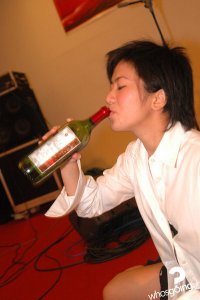
Vineyard real estate prices remain strong in Napa County, especially for “lifestyle” homes with vineyard views. J.L. Sousa
The price of a residential piece of real estate may be falling. But you’d never know it out among the vines.
The demand for Napa County vineyard land is strong, and the future looks even brighter, according to industry observers.
David Freed is chairman of UCC Vineyards Group, a firm that specializes in vineyard property sales and owns vineyards from the Sacramento Delta to Santa Barbara. He said that he can look back at the past 10 to 15 years of transactions and count the number of vineyard foreclosures on one hand.
“Because of the scarcity of property in Napa, the sellers are in control,” Freed said. “I know of a property on Zinfandel Lane that was on the market for two years because the seller wouldn’t budge on his price. He recently got his price.”
Umpqua Bank’s Steve Kattner, senior vice president of the wine specialty group, said he is not seeing any crossover from the housing market. “I don’t see things slowing down ... barring some sort of agricultural disaster,” Kattner said.
Tom Jordan makes his living assessing vineyard properties in Napa. The principal of Associated Services Appraisal said that when he started here in 1974, no one paid $10,000 for an acre of vines. Now prices start at about $100,000 per acre, and in some cases reach more than three times that high.
‘Adult Disneyland’
In many ways it’s economics 101: Demand is outstripping supply.
But the economics are also driven by forces beyond the composition of the soil and the quality of the sunlight that strikes the land.
Large numbers of investors and wealthy individuals have long looked to own a piece of the wine country dream. Tony Correia, president of Correia-Xavier Inc., an appraisal service in Sonoma, said Napa Valley’s global reputation keeps the market vigorous.
“For many of us in my industry, this is an adult Disneyland,” he said. “It is a unique market with extraordinary capital and very savvy players for a limited supply of property.”
Jordan said some of the really big players actually don’t want the vineyards — they’re in it for the brand.
They sometimes acquire large pieces of property that come with a wine brand; they sell off the land and then buy grapes for their wines.
“Big companies want to build brand,” Jordan said. “It is not necessarily the land that they want. They can build the brand, not the land ... they are about selling image. They don’t really care about the real estate so much.”
While residential brokers take out listings in newspapers and plant signs on lawns, and commercial property brokers post billboards on available sites, vineyard deals are often done quietly.
“If we want to buy, we often hear about it over the fence,” Freed said. “Many vineyard properties don’t come to the marketplace. You have to get right on it. It’s a very tight market here.”
Just as corporations sometimes are in it for the brand, so-called “lifestyle” buyers are in it for something other than the grapes. They are looking for a dream home — commonly a second home — with grapes on the side. They pay a premium for it.
“These (buyers) pay more than the large-scale commercial grower” per acre, said Correia. “The lifestyle buyers are less concerned about the economics, and that has been the case for quite some time.”
Jordan said he has heard of 10- to 15-acre “lifestyle” parcels fetching up to $300,000 per acre.
Julie Nord of Nord Coast Vineyard Services estimated that developed cabernet sauvignon vineyards in the mountains can fetch $300,000 per acre, while on the valley floor prices are in the $175,000 to $200,000 range.
In the areas of Rutherford Bench, Howell Mountain and Oakville Bench, vineyard real estate can hit $400,000 to $500,000 per acre. Property transactions on those sites often include a wine label, inventory, mailing list or a crush facility.
It is a diverse group putting money in vineyards, ranging from individuals to investment groups and insurance companies — and even pension funds looking for long-term investments.
“There are a lot of foreign (investors) right now,” Jordan said. “Wine real estate is attractive because of the weak U.S. dollar. In the 1980s it was the Japanese, and now it is the Europeans. And there is a lot of wealth in emerging China.”
He said there have been major buys recently, including three big sales of chardonnay acreage in Carneros.
“We’re talking a couple of hundred acres, and that is a bit unusual.”
Pritchard Hill, in the hills east of St. Helena, is a hot property right now because of the reputation of the red wine being produced in the area by Chappellet Vineyard, Colgin Cellars and others.
“People follow wines and look for opportunities,” Jordan said.
Said Correia, “There is a lot of capital looking for some place to invest and right now winegrapes are attractive,” he said. “There is a lot of capital going into ag properties all over the world. (Investors) perceive strength in agriculture right now.”
MIKE TRELEVEN



